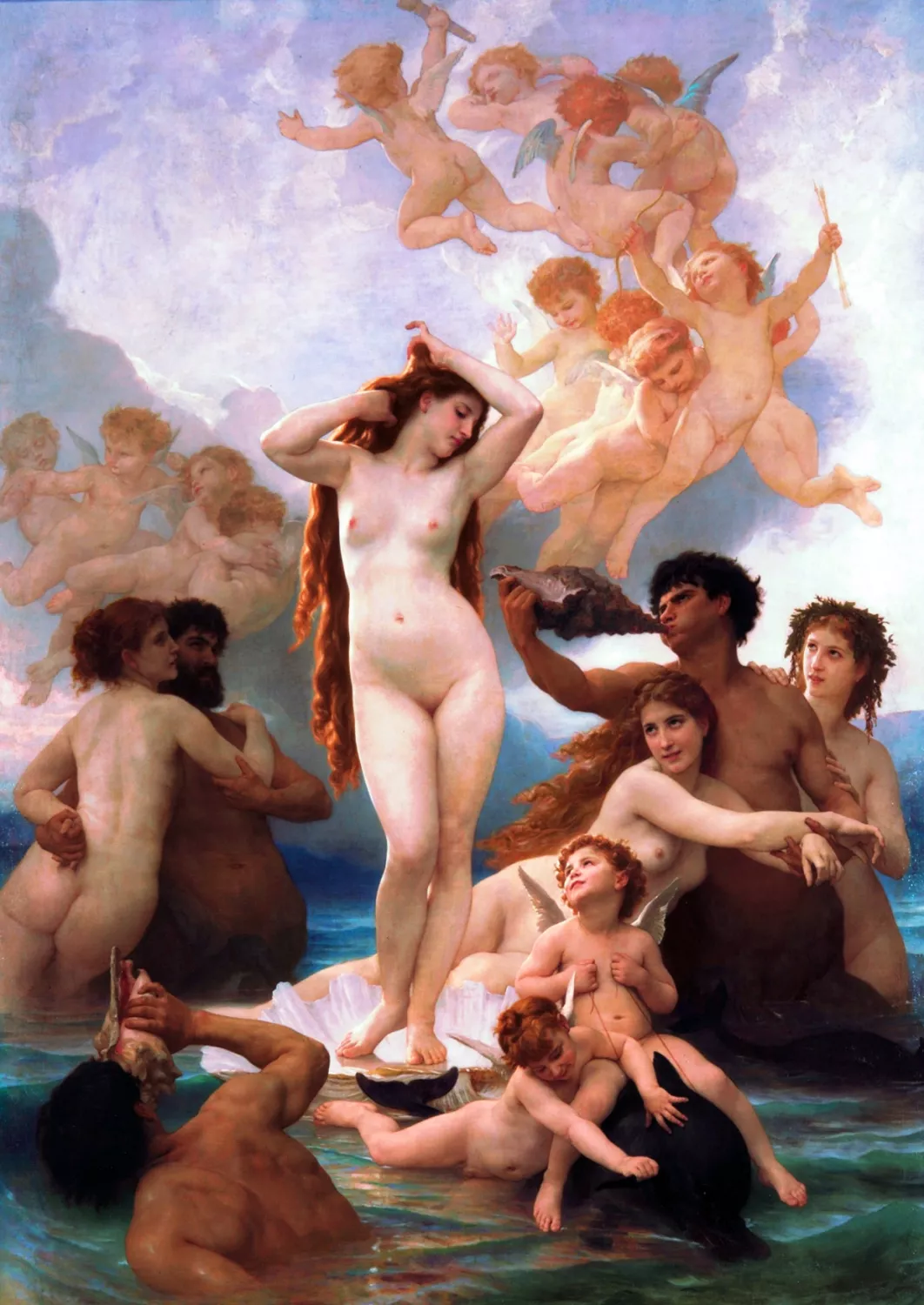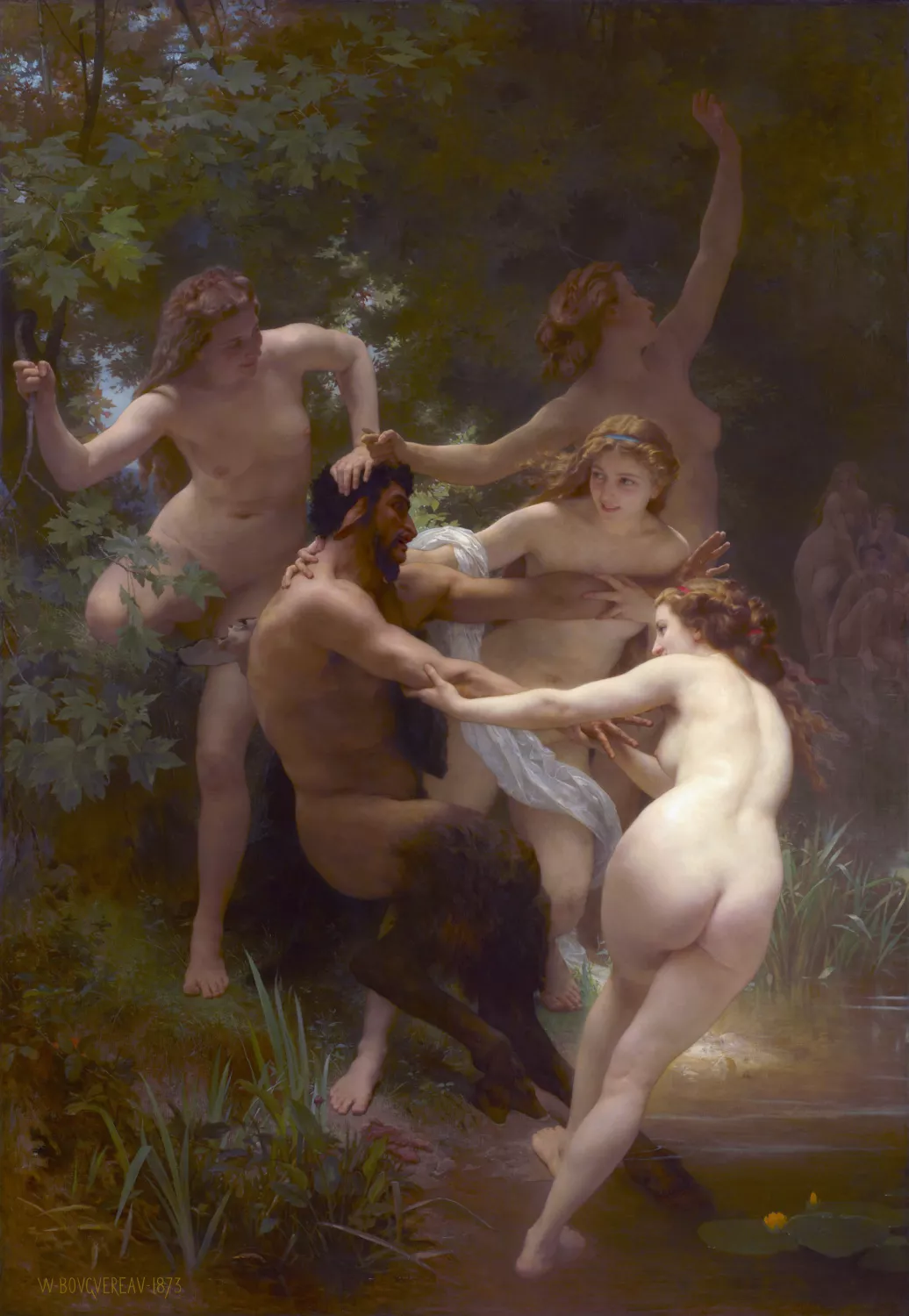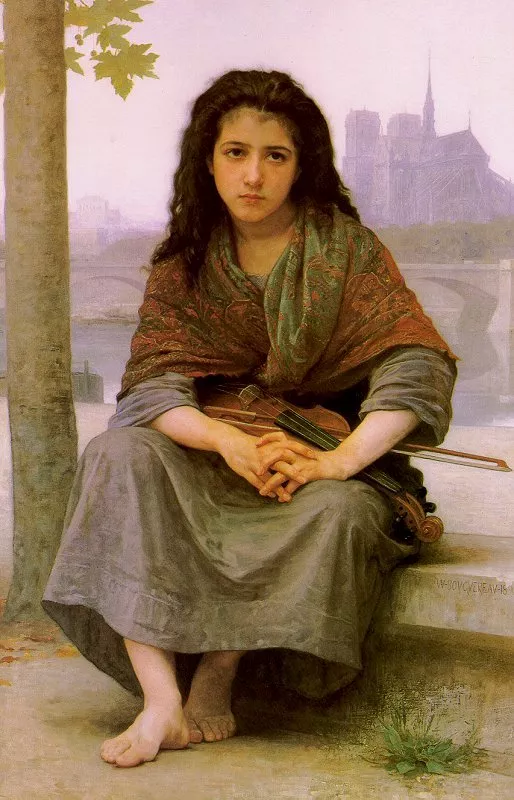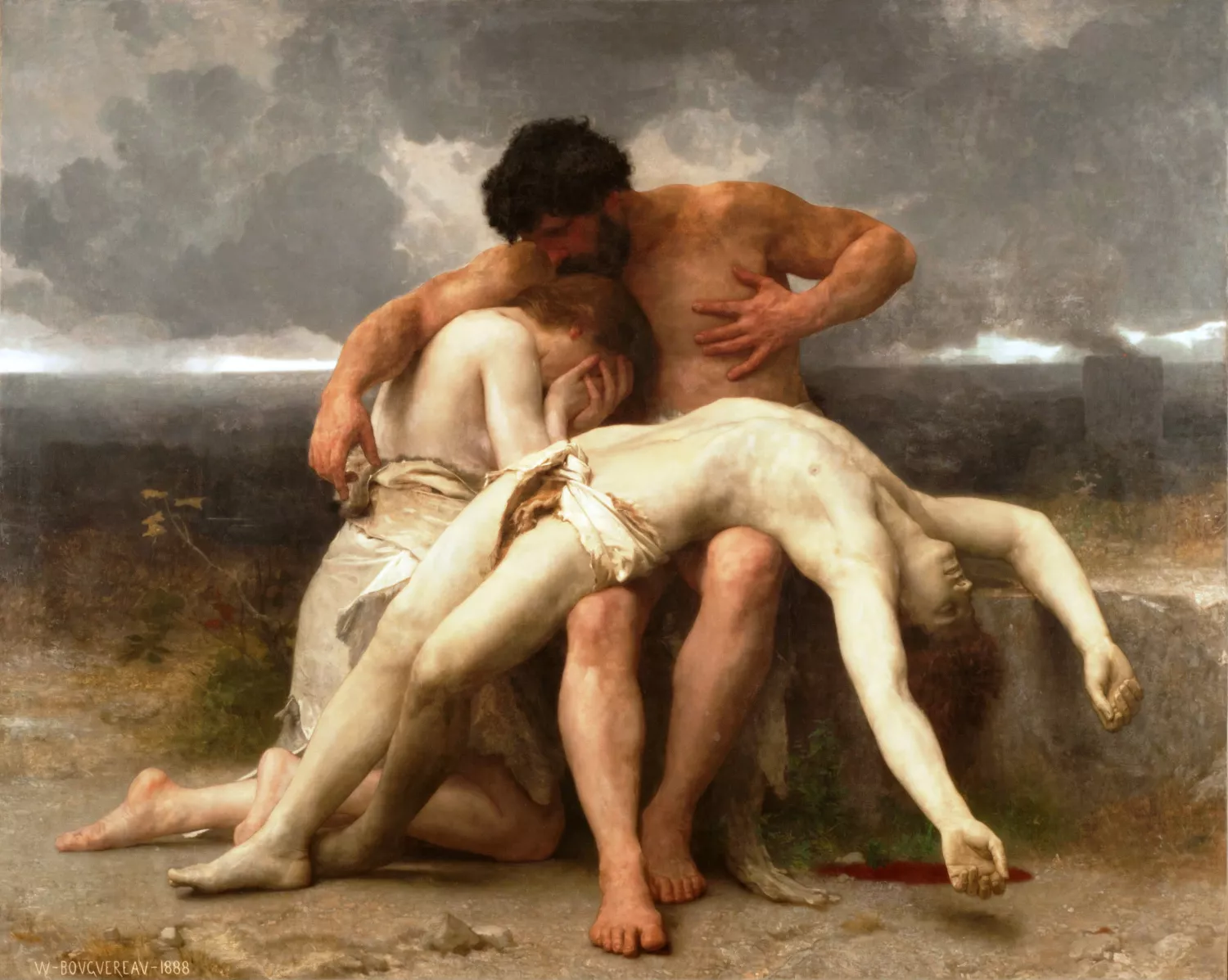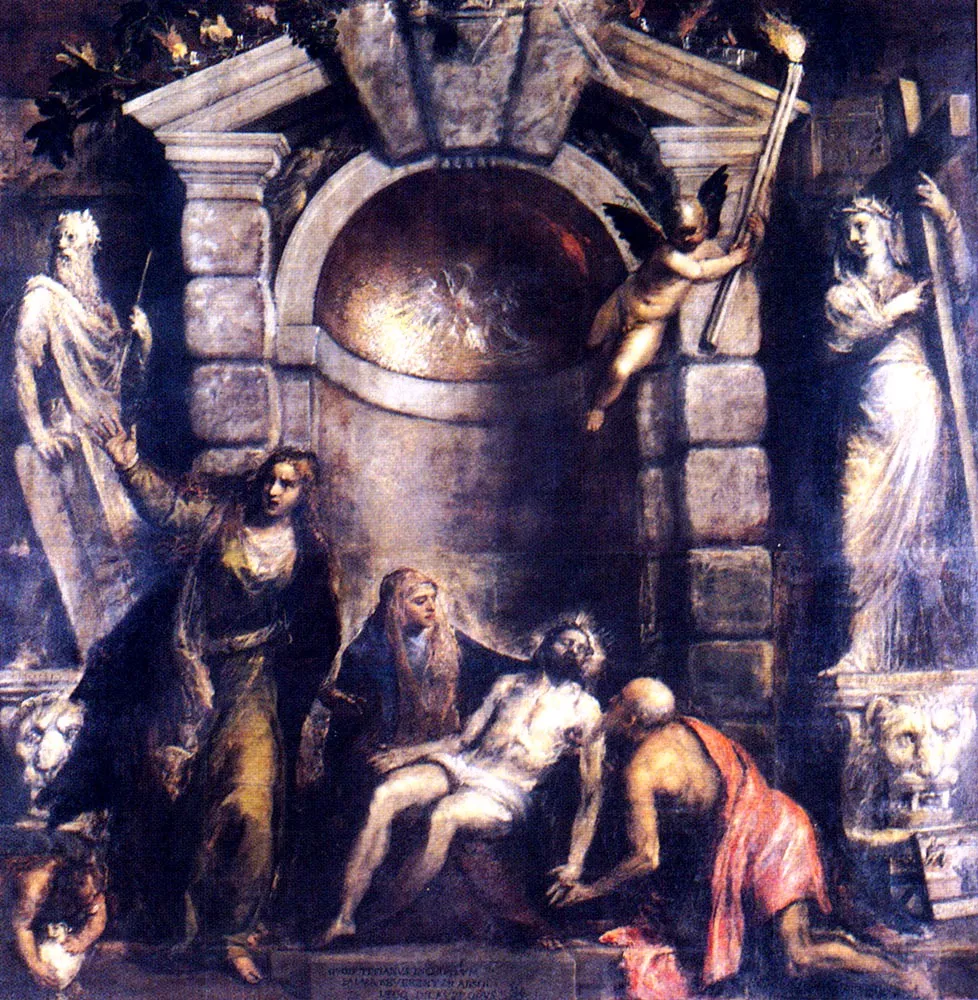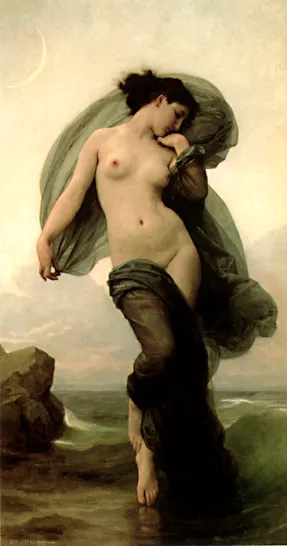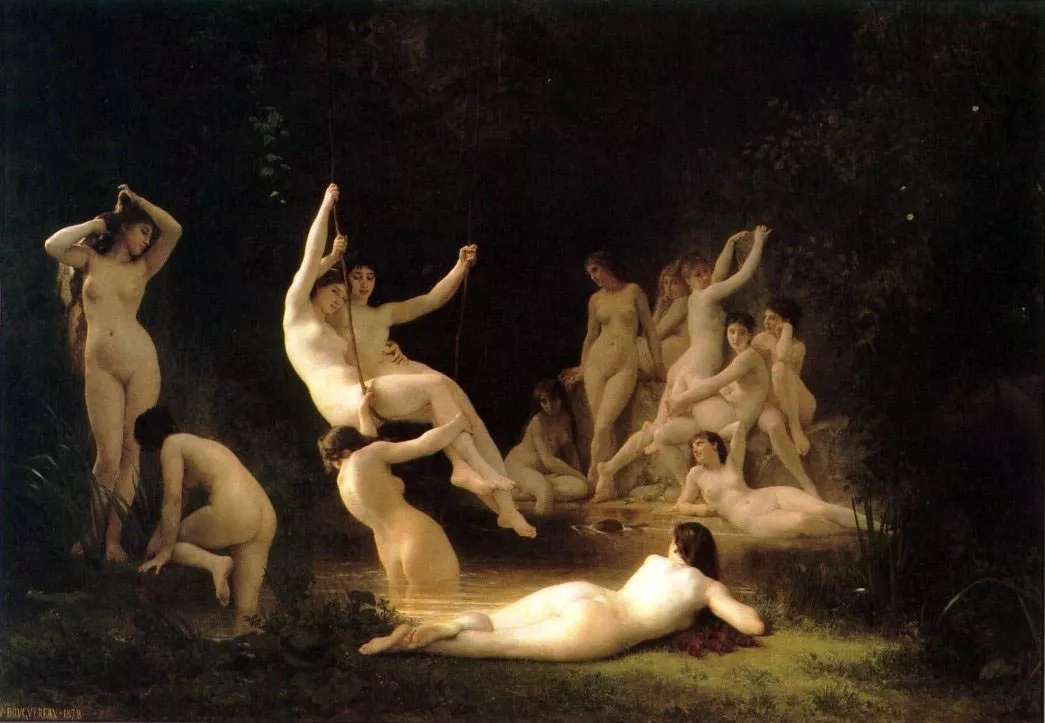William-Adolphe Bouguereau Biography
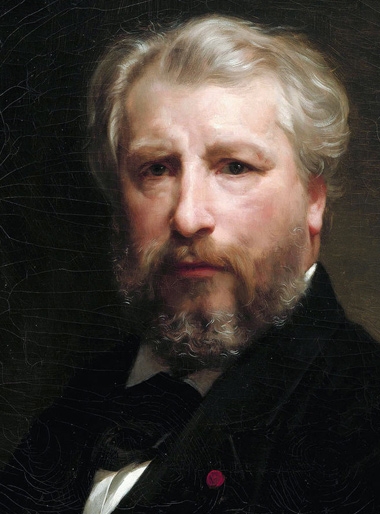
William-Adolphe Bouguereau (1825-1905) was a French academic painter who became one of the most celebrated and successful artists of his era. A staunch traditionalist, Bouguereau adhered to the principles of the Académie des Beaux-Arts, producing realistic genre paintings, portraits, and mythological scenes with exquisite technical mastery. His idealized depictions of the human form, attention to detail, and focus on classical subjects made Bouguereau immensely popular during his lifetime, though he faced criticism from the avant-garde for rejecting modern styles. Despite falling out of favor after his death as artistic tastes shifted, Bouguereau has undergone a major revival in recent decades, with his paintings now selling for millions and his place as a preeminent 19th century academic artist firmly reestablished.
Early Life and Training
William-Adolphe Bouguereau was born on November 30, 1825 in La Rochelle, France. From an early age, he showed artistic talent and his family supported his ambition to become an artist. In 1839, at age 12, Bouguereau went to study the principles of figure drawing and composition at the École des Beaux-Arts in Bordeaux.
In 1846, Bouguereau relocated to Paris to complete his training at the prestigious École des Beaux-Arts. There he studied under François-Édouard Picot and was heavily influenced by the prevailing doctrine of academic painting. Bouguereau's early works were historical and mythological scenes in keeping with the Académie's teachings.
Rise to Fame
Bouguereau had his first major success in 1850 at the age of 25 when his Body of Christ painting was well received at the Paris Salon. Over the next few decades, he would go on to exhibit over 50 works at the annual Paris Salons.
In 1856, Bouguereau married Marie-Nelly Monchablon and they had five children together. Around this time, he began painting modern-life subjects like The Birth and portraits, in addition to his mythological works. His 1861 painting Nymphs and Satyr brought him widespread acclaim.
Bouguereau's technical mastery, idealized naturalism, and attention to detail allowed him to render the human body with unparalleled realism. This, combined with his focus on traditional subjects, made him one of the most popular and successful academic painters of his era.
Teaching Career
In 1876, Bouguereau was made a member of the French Institute and taught at the Académie des Beaux-Arts. He was a staunch proponent of traditional academic painting and believed in realistic depictions of the human form and classical subject matter.
As a teacher, Bouguereau was highly influential and had many students who went on to successful careers as painters. His atelier was one of the most popular in the Académie. Bouguereau emphasized technical mastery above all else and trained his students in drawing, composition and the study of nature.
Despite the rise of the avant-garde and modern art movements like Impressionism, Bouguereau remained committed to the Académie's principles throughout his career. He was harshly critical of modern styles, once stating "all the unhealthy fermentations of the human mind pass across the canvas."
Later Years
In his later years, Bouguereau's reputation began to decline as public tastes shifted towards the avant-garde. However, he continued to be a celebrated and successful artist until his death in 1905 at the age of 79.
Bouguereau's technical brilliance and ability to realistically render the human form was unmatched. His paintings featuring mythological themes and female nudes were immensely popular in his time. Works like The Birth of Venus, Nymphs and Satyr, and The Bohemian exemplify his mastery.
While he was harshly criticized by the avant-garde for his traditional academic style, Bouguereau's paintings were a major influence on many artists of his era. He remains one of the most important figures in the Académie's revivalist tradition and 19th century academic painting.
In the years after his death, Bouguereau's reputation faded as modern art firmly took hold. However, there has been a major revival and reappraisal of his work in recent decades. Major exhibitions of his paintings have been held and his works now sell for millions at auction. Bouguereau is remembered as the consummate academic painter and a technical genius.
Famous Works of Bouguereau
William-Adolphe Bouguereau's famous paintings showcased his technical mastery and ability to realistically render the human form. His mythological scenes like The Birth of Venus and Nymphs and Satyr exemplify his skill at depicting the female nude with idealized beauty. Bouguereau's portraits, such as The Bohemian, capture the essence of his subjects through exquisite details and textures. Religious works like Pieta demonstrate his talent for conveying emotion through anatomical realism. Other renowned pieces include the allegorical Alma Parens, the atmospheric Evening Mood, and the enigmatic Youth Admired by Two Women. Bouguereau's famous works highlight his commitment to academic painting traditions and his unmatched ability to render the human form.
The Birth of Venus (1879)
Oil on Canvas
Dimensions: 300 cm × 218 cm (120 in × 86 in)
One of Bouguereau's most celebrated mythological paintings, The Birth of Venus shows the goddess Venus arriving at the seashore after her birth fully grown. The painting exemplifies Bouguereau's mastery of the human form and his ability to render flesh tones with unparalleled realism. Venus is shown in an idealized, classical pose surrounded by mythological figures.
Nymphs and Satyr (1873)
Oil on Canvas
Dimensions: 260 cm × 180 cm (100 in × 71 in)
Nymphes et Satyre also known as Nymphs and Saytr - this iconic painting shows a satyr, a lecherous half-man, half-goat figure from Greek mythology, watching and lusting after a group of young, nude nymphs as they frolic innocently. Bouguereau's technical brilliance is on full display in the details of the nymphs' bodies and flowing movements. The work is both beautiful and vaguely erotic.
The Bohemian (1890)
Original Size: 150 x 106.7 cm
One of Bouguereau's most famous portraits, The Bohemian painting shows a young gypsy girl in a colorful peasant dress. Her exotic beauty and alluring gaze exemplify Bouguereau's ability to capture the female form and human emotion. The rich details and textures of her clothing and surroundings showcase his technical mastery.
First Mourning (1888)
Dimension: 203 by 252 centimetres (80 in × 99 in)
The First Mourning is an oil on canvas painted in 1888 by William-Adolphe Bouguereau. Its dimensions are 203 by 252 centimetres. It is in the Museo Nacional de Bellas Artes in Buenos Aires, Argentina. This work sshows the moment after Adam and Eve just found the body of their son Abel, who was murdered by Cain.
Pieta (1876)
Dimensions: 148 x 230 cm
Bouguereau's Pieta shows the body of Christ held by the mourning Virgin Mary after the crucifixion. The detailed realism of Christ's lifeless body and Mary's anguished expression make this one of Bouguereau's most powerful religious works. It exemplifies his ability to render human anatomy and emotion.
Evening Mood (1882)
Dimensions: 207.5 cm (81.7 in) × 108 cm (43 in)
This serene Evening Mood painting shows a young woman sitting by a lake, gazing wistfully into the distance as dusk falls. Bouguereau's mastery of light, color and naturalistic detail is on full display. The woman's flowing dress and the reflections in the lake showcase his technical virtuosity.
The Nymphaeum (1878)
Original Size: 144.8 x 209.5 cm
This large-scale mythological work: La Nymphee also known as The Nymphaeum shows nude nymphs frolicking in an ornate fountain or nymphaeum. The intricate architectural details and flowing movements of the figures demonstrate Bouguereau's technical prowess. The sensual nature of the female nudes exemplifies his taste for the erotic.
While William-Adolphe Bouguereau's reputation faded in the years after his death as modern art firmly took hold, the past few decades have seen a major reappraisal and renewed appreciation for his work. Major exhibitions have been mounted celebrating his technical brilliance, and his paintings now command staggering prices at auction, cementing his status as the consummate academic painter of the 19th century. Though harshly criticized by the avant-garde of his day, Bouguereau's traditional style, idealized naturalism, and unparalleled ability to render the human form have solidified his legacy as a true master. His enduring influence on generations of artists ensures that Bouguereau will be remembered as one of the most important and skilled painters of his era.